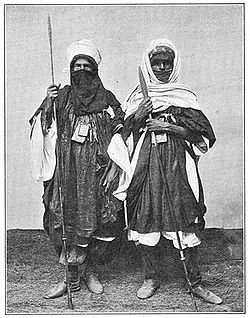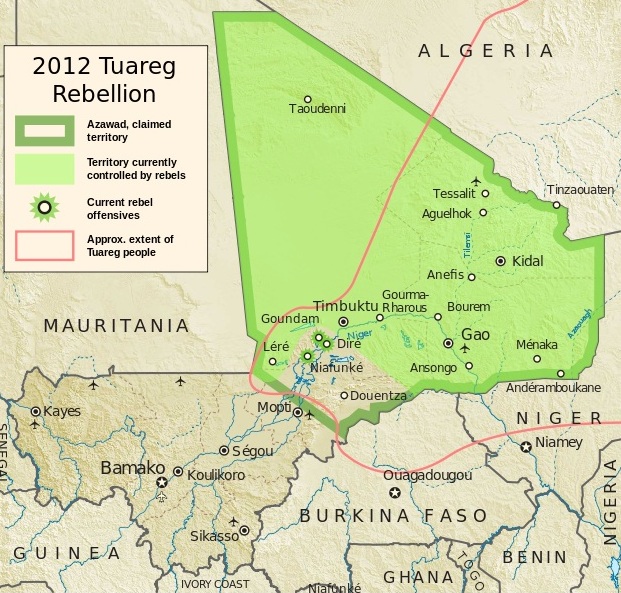|
|
|
|
|
New
& Recent Conflicts
War
and Conflict
Links Portal
for pages on the history of
comics and superhero
characters Portal
for pages on the nations of the
world Portal
for pages on military history Lists
of wars throughout history and
from around the world Biographical
files on individuals who impact
American politics, culture,
business, education and other
arenas of life in the United
States. Pages
on the governmental systems of
selected nations. United
States national government and
politics. Information
on the History Guy, the origin of
the website, along with
commentaries
and a site
map. |
Tuareg rebellion
(1916-1917)--The Tuareg were led by
Ag Mohammed Wau Teguidda Kaocen
(1880–1919), who was the Tuareg
leader of this uprising against the
French colonial rulers of most of
Northern Africa. Kaocen was a believer
in the militantly anti-French Sanusiya
Sufi religious order. This Tuareg
rebellion was inspired by the Sanusi
revolt against the Italian rulers of
Libya (which also involved the British
forces in Egypt). This Tuareg rebellion
against the French came during World
War One, and proved a significant
distraction for the French military.
Despite some early successes, the
Tuareg were defeated. Tuareg
Rebellion in Mali (1962-1964)-With
independece from France, and with the
borders of northwestern African nations
drawn by France to create artifical
boundaries that separated large ethnic
groups among several nations, conflict
between Tuareg Berbers in the north and
the Black dominated government of
newly-independent Mali was inevitable.
Soon after independence, rebellion in
northern Mali broke out, and the Tuareg
lost. The harsh tactics of the Malian
military created a refugee crisis, with
thousands of Tuareg fleeing north into
Algeria. The death and destruction, and
harsh occupation of the Tuareg lands
created a lasting resentment that
helped fuel the future Tuareg
rebellions. The continued poverty in
northern Mali and the Mali government's
continued refusal to develop the north
led to continued discontent among the
Tuareg. Tuareg
Rebellion in Mali
(1990-1995)-Conflict between Tuareg
Berbers in the north and the Black
dominated government. Tuareg
Rebellion in Mali
(2007-2009)-Conflict between Tuareg
Berbers in the north and the Black
dominated government of Mali.
Map of
the2012 Tuareg Rebellion Mali, before
the French
Intervention Tuareg
Rebellion in Mali (2012)-This
latest Tuareg rebellion began in
January, 2012, with the return to Mali
of several thousand Tuareg mercenaries
from Libya, where they served in the
Libyan forces of Colonel Muammar
Gadaffi. Following the
Libyan War of
2011,
in which Gadaffi was overthrown and
killed, the Tuareg mercenaries crossed
the Sahara from Libya and returned home
to northern Mali with large quantities
of heavy weapons. They began their
rebellion against the Mali government
in January, and completed their
liberation of the Tuareg homeland in
April, 2012. Soon after the government
forces had been driven out, Islamist
and Jihadist elements, allied to
al-Qaida, took over the rebellion and
instituted a version of Sharia law in
the Tuareg homeland. For nearly six
months, a sort of truce existed between
Mali and the rebels, until early
January, 2013, when the rebels seized
the central Mali town of
Konna. With
the seizure of Konna, and the apparant
inability of the Mali army to stop the
Jihadist advance, France decided to
intervene militarily at the invitation
of the Mali government. French
airstrikes and ground forces began to
drive the rebels back. "The
History Guy" is a Registered Trademark. Contact
the webmaster |
Historyguy.com Search
Engine
|
||||||||

